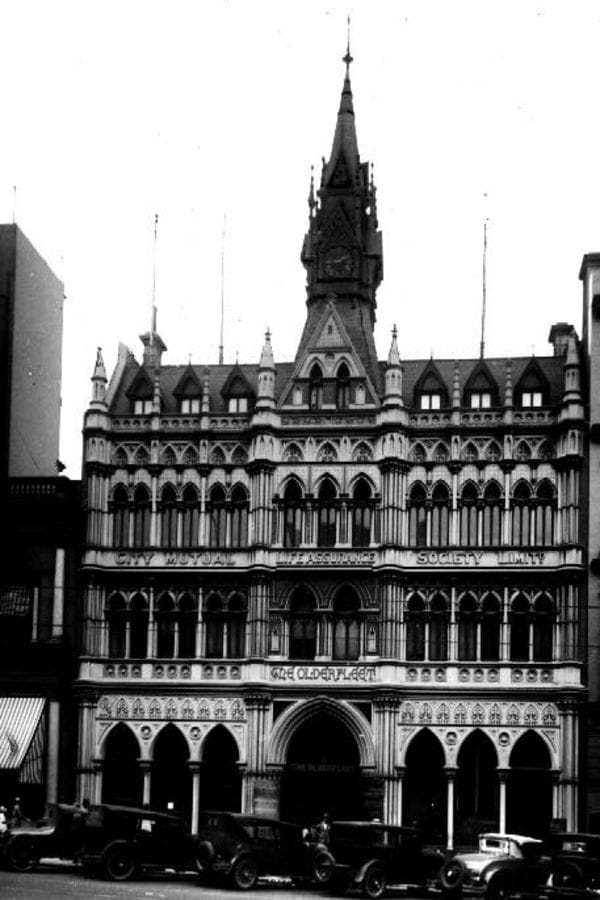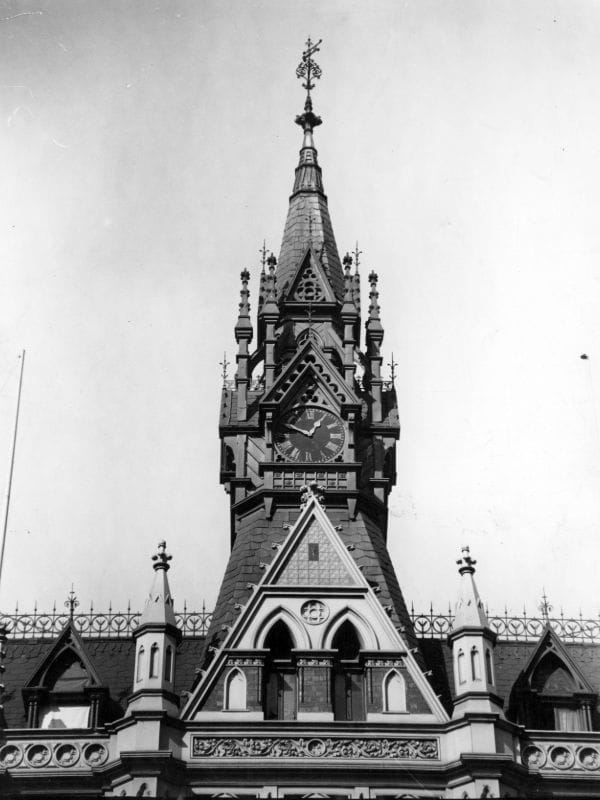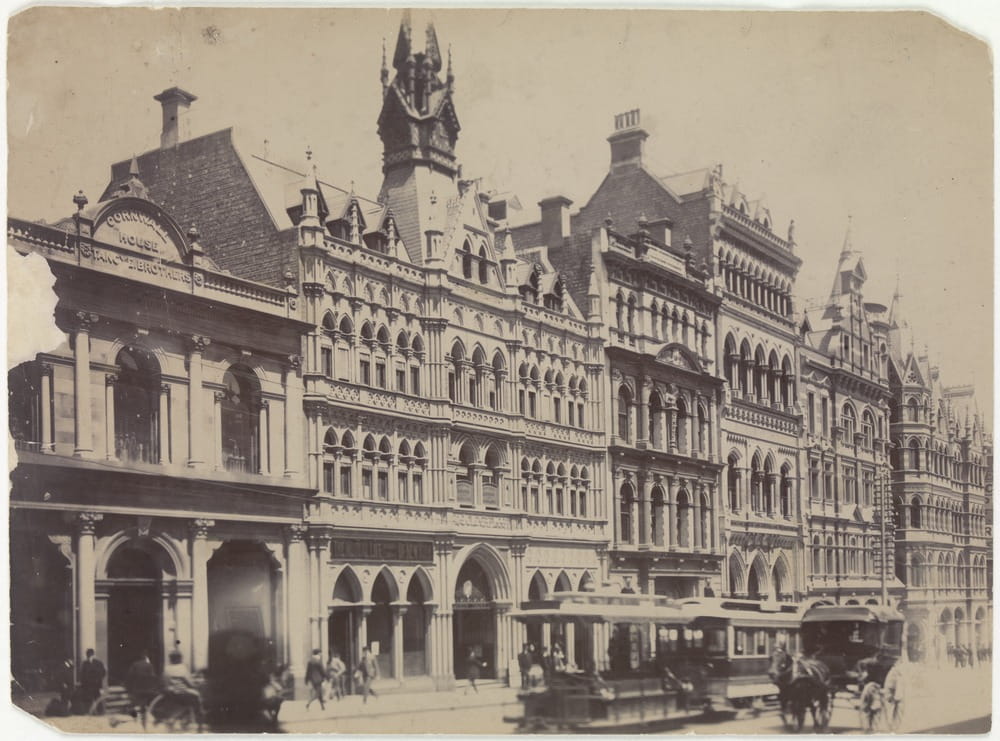Past, Present and Future
The site at 477 Collins Street has a rich and colourful history steeped in heritage that spans 150 years to present day, with an exciting future on the horizon. Emerging at the centre of growth and business trade during the late 1800s land boom; to an icon for the heritage preservation movement in Victoria during the 1970s and early 1980s; and now a leading contemporary workplace that is home to some of Australia’s brightest minds; the journey of Olderfleet follows Melbourne’s dynamic progress as a city.
Image: View of Collins Street streetscape in c. 1950s. Note non-original cantilevered
awning at Record Chambers (indicated). Source: State Library of Victoria
In June 1880, Melbourne was transforming from a gold-rush town to a commercial metropolis. The city was the first to host the telephone exchange in Australia, and its bustling port and wharves along the Yarra River kept the local economy thriving, handling agricultural cargo and goods for sale at the city markets. The building and architecture of that time began to change, with ornate office buildings more than 10 storeys high starting to alter the city’s streetscapes, rivalling those of New York and London.
The western end of Collins Street retains the rich heritage of that late 1800s land boom, when ‘Marvellous Melbourne’ rapidly expanded into a major world city, with fortunes won in business, agriculture and finance.
At the height of Melbourne’s industrial expansion, three distinguished buildings were constructed to take advantage of Collins Street’s ideal position near Melbourne’s ports on the Yarra River just south of Collins Street at that time.
Designed in varying Gothic and Romanesque Victorian styles, the Record Chambers (1887), New Zealand Insurance Building (1887-8) and the Olderfleet Building (1890) reflected the city’s rapid evolution as industry expanded and creative endeavours were applauded. The three buildings epitomise the exuberance and indulgence of the booming city, associated with a string of prominent architects and providing a unique row of the significant examples of development at the time.

Image: By News Ltd, 1900
The buildings were home to a diverse mix of tenants that reflected the changing industries of the city overtime. In the nineteenth century, banking merchants, shipping agents, wool business leaders and related industries like publishers and solicitors filled the buildings as they were only a short walk to the trade at Yarra River wharves. Interestingly, one or two celebrated artists took up residence within the walls of buildings, drawn to the beauty of the architecture and the vibrancy of Collins Street.
In the 1970s, the buildings were part of the community and media campaigns lead by the National Trust to save heritage buildings in Melbourne. As part of the campaign, the Trust published the Collins Street Report, a comprehensive survey of buildings along the street, which for the first time collectively called the three buildings ‘Olderfleet Place.’ The buildings were central to the report, as they formed part of the critical heritage streetscape at the west end of Collins Street.
This extraordinary time in Melbourne’s history is preserved today through original artworks, historic artefacts and the conserved buildings of Olderfleet Place, whose structure and façades hark back to an era of industrial progress, prosperous new enterprises and dynamic growth for the city. All three buildings are classified by the National Trust of Australia (Victoria) as buildings of state significance.

Image: By News Ltd, 1900
Today, Mirvac, with a host of partners, have created a new workplace that rises out of the heritage-listed buildings. The design, by award-winning Grimshaw Architects, sets a new precedence for adaptive heritage and workplace integration in Australia, with the original heritage buildings a focal point for the entire precinct, celebrated throughout your journey through the building, where you can catch glimpses of the façade from all angles.
Olderfleet now brings together some of Australia’s great minds and organisations, with tenants Deloitte, Urbis, Norton Rose Fulbright and Lander and Rogers all calling the building home. The revitalised workplace marks the resurgence of Melbourne’s mid-town and a new natural centre for the city.

